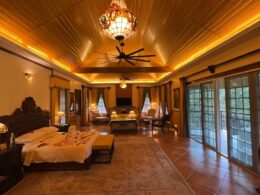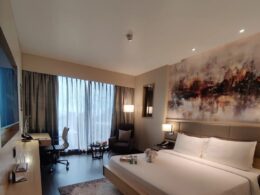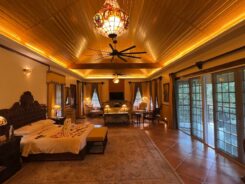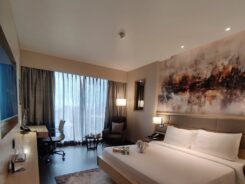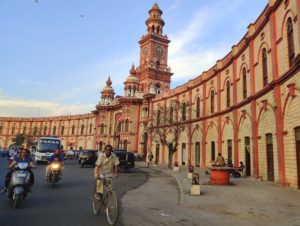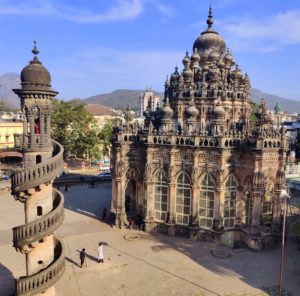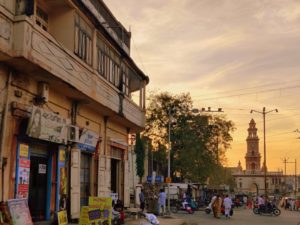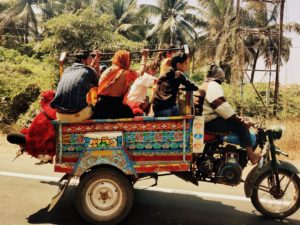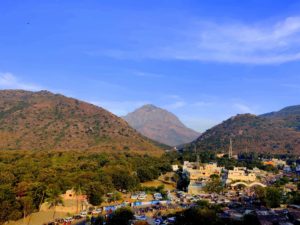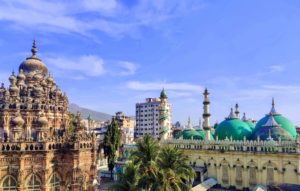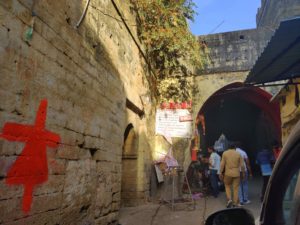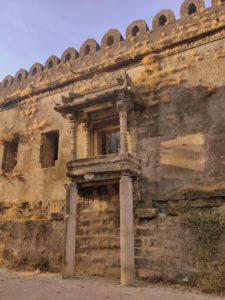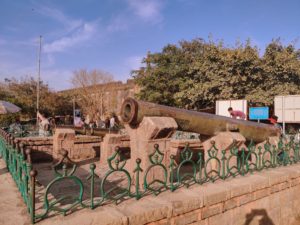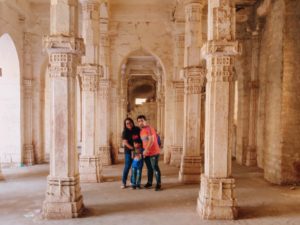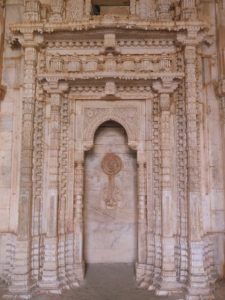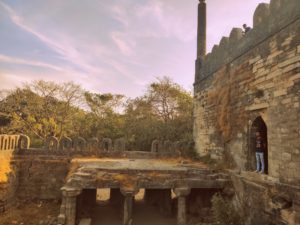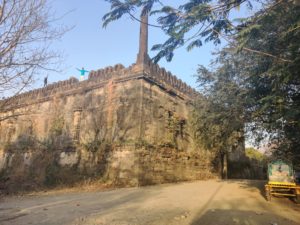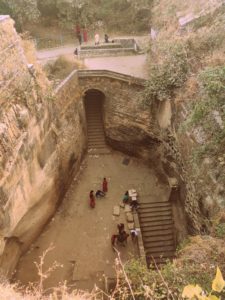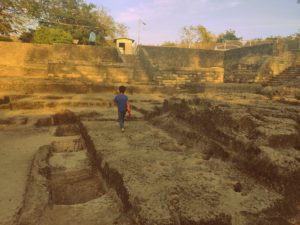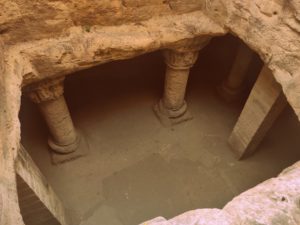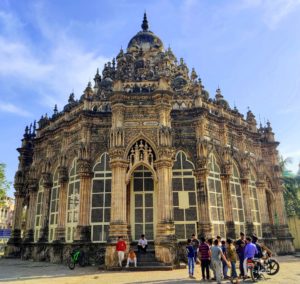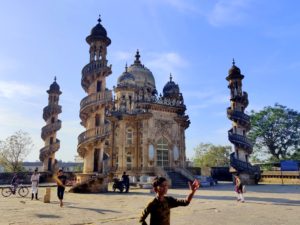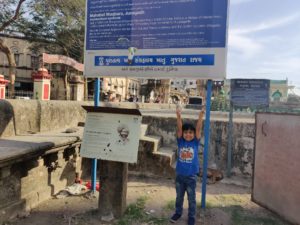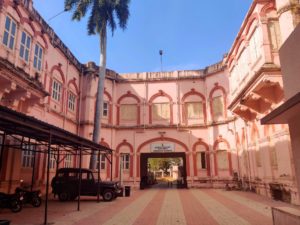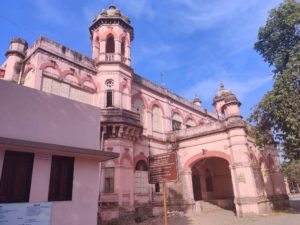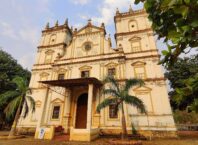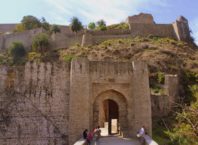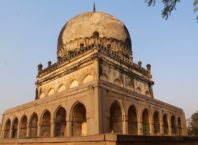The fifth city on our Saurashtra trip was Junagadh. So far we had enjoyed Ahmedabad’s hospitality, witnessed Shivratri in Somnath, explored Diu island and met the Asiatic lions in the Gir forest. We were quite amazed by the diversity that we had experienced so far in Gujarat and were looking forward to our next Junagadh trip. I had first heard of Jungadh in a daily soap called “Kyunki saas bhi kabhi bahu thi” that used to run on Star TV during my childhood. But I had never thought that I would one day plan a Junagadh trip for a family getaway.
Junagadh at the outset comes off as an ordinary city of Gujarat however it is an ancient city associated with the Mauryan dynasty. Infact, the city’s name Junagadh means “Old Fort” which refers to the Uparkot fort built by Chandragupta Maurya. The city had rulers from various dynasties like Chudasama, Kshatrapas, Maitrakas, Chalukyas etc. In 1472, Junagadh was annexed by the Gujarat Sultan Mahmud Begada. If you have read my blog about Ahmedabad then you know he is the same sultan as per local folklore, who completed the Adalaj stepwell to marry the widowed queen. The sultan built the fortifications around the town and the mosque in Uparkot Fort.
After two centuries of Mughal rule, Junagadh state was declared independent by Sher Khan Babi who founded the dynasty of Babi Nawabs of Junagadh. For the next two centuries, the Nawabs ruled Junagadh, first as tributaries of Marathas, and later under the suzerainty of the British.
Junagadh’s destiny: A tale from the partition
During the partition of India and Pakistan in 1947, the princely states under British suzerainty were given a choice of acceding with India or Pakistan. The states were however asked to consider the “geographic compulsion” meaning if they shared a border with their host country. The Nawab of Junagadh decided to accede to Pakistan even though Junagadh didn’t share a border with Pakistan. His argument was that even though Junagadh was surrounded by India on three sides, it could join Pakistan through the sea. But the people of Junagadh did not agree with their Nawab and amidst the increasing pressure the Nawab and his family fled to Pakistan. Junagadh voted to accede with India and the rest is history.
How to plan your Junagadh trip
Junagadh is well connected to the main cities of Gujarat by road. You can easily travel by bus or by cab from nearby cities like Rajkot, Porbandar, Somnath, Diu, etc. We were driving down from Gir forest which is about 60 kms away. The nearest airports to Junagadh are Rajkot and Porbandar airports.
We reached Junagadh in the afternoon and after having lunch we planned to visit Uparkot and Mohabbat Maqbara. We would have liked to visit Girnar but due to being short on time we decided to visit Darbar Hall Museum and then proceed to Porbandar.
Uparkot Fort
The fort is located at the foothills of Girnar mountains and we passed through the old part of the city to reach the gates of the ancient fort. The road runs through with old havelis with giant gates and traditional neighborhoods on both sides. You can hire a guide at the entrance and getting a guide is a good idea as there are many stories about the fort that you may miss otherwise.
The fort is compound is quite large and cars are allowed inside. If you are visiting Uparkot Fort with kids, especially in the afternoon, it is better to drive through rather than walking for 2-3 hours in the hot sun. As you enter the main gate, there are two temples on both sides dedicated to Ganesha and Hanuman. The logo of Junagadh, a shield and a sword, is still quite prominent at the entrance wall.
Junagadh’s heritage
The history of Junagadh’s Uparkot fort is a tale of lost and found. Our guide tells us that the fort was built during the Maurya samraj, however it was abandoned when the capital of Saurashtra was moved from Junagadh to Vallabhi. As per legend, the fort was lost in the dense forest till it was discovered by a woodcutter who somehow found the gate of the fort while cutting wood. He asked a sage sitting nearby about the fort’s name and the sage replied “juna” meaning ancient. The fort is believed to have got its name from here. The woodcutter informed the Chudasama ruler about his discovery and the fort found the limelight again. The fort was reinforced by the Chudasama king and once again Junagadh became the capital of the state.
As we reach the ramparts, we get a better view of the city across the walls surrounded by trees and bushes. Our guide tells us about the two cannons that are present there and are called Manek and Neelam. The cannons were brought in from Diu and originally belonged to the Ottoman Turks who were defeated by the Portuguese in the Siege of Diu. The Siege of Diu is a tale of twists and turns but let’s park that for another day. As the Ottoman fleet was defeated at sea, these canons were never fired even once. You can still see the Arabic inscription on the canons that say they have been commissioned to be used in the service of Almighty.
Tales from another time
As we walk on, we come to the structure which looks like a Masjid from outside but as we walk inside, the architecture is undoubtedly Hindu. Our guide says “Welcome to Ranakdevi ka mahal” (Ranakdevi’s palace). According to bardic accounts, Ranakdevi was the adopted daughter of a potter who lived near Junagadh. The fame of her beauty reached both the kings, Siddharaj Jayasimha and Raja Rakhengar and both aspired to marry her. However, before the Chalukya king, Siddharaj could reach her, the Chudasama king, Rakhengar married her. This enraged Siddharaj and he decided to attack Junagadh.
Meanwhile, Rakhengar dismissed his nephews Desal and Visal, accusing them of inappropriate relations with the queen as he found Desal drunk in the queen’s palace. Seizing the right opportunity. Rakhengar’s nephews betrayed him and helped Siddharaj win Uparkot fort and slay the king. Siddharaj then took Ranakdevi and offered to marry her. The widowed queen however couldn’t forgive Siddharaj and committed sati at Rakhengar’s funeral. But before her death, she cursed Siddharaj will be childless and it is believed that the Chalukya king did not have any kids when he died.
The next story takes us to another era, during the rule of the last Hindu Chudasama king tor rule over Junagadh, Mandalika III. Nagbai, a pious Charan lady considered the king to be her brother and once during Rakshabandhan went to tie a rakhi on his hand. But every time she went close to put tilak (vermillion) on his forehead as per the ritual, the king would turn away. After a few attempts, the courtiers started laughing but Nagbai didn’t find it funny. The king’s unkind act made her curse the king that his palace will be lost and Mohammedans will rule where the Chudasamas are ruling. Whether this folklore is true or not, the last Chudasama king, Mandalika III lost Junagadh to Mahmud Begada and had to convert to Islam. The sultan of Gujarat, Mahmud Begada built fortifications around the town and built the mosque “Jama masjid” on top of Ranakdevi’s palace.
A local saying goes that if you haven’t seen the massive stepwells of Adi kadi vav and Navghan kuvo, then you haven’t seen anything in life. This is the better-maintained portion of Uparkot fort and there are a series of steps that enter arched doorways carved in soft stone to reach the bottom of the stepwell.
It is believed that slave girls from the time of Chudasama kings built it. Legend says that even after digging deep about 162 steps into the manmade canyon, there was no water to be found. Thus followed, a tragic tale of human sacrifice, as the sisters Adi and Kadi sacrificed their lives and water erupted from the underground. Colorful bangles and scarves are hung on a nearby tree as a tribute to the young girls.
The Buddhist influence
Our last stop in Uparkot fort was the Buddhist cave that was carved in the 2nd-3rd century in two tiers. The lower floor has better carvings with pillars and viharas intact. There isn’t much to see now, to be honest, however, it does give you a peek into the past it once had.
Mahabat Maqbara
Probably one of the most underrated monuments, Mahabat Maqbara is a landmark in Junagadh however mainly hidden from the rest of the world. A rare amalgamation of European, Neo-Gothic and Indo Islamic architecture, the first mausoleum which its intricate carvings was built by Nawab Mahabat Khan II.
The adjoining mausoleum looks quite similar to the Taj Mahal with the main tomb surrounded by minarets but with spiral staircases running on the outside rather than hidden inside. This unsung architectural jewel in Junagadh is the mausoleum of Vazir Bahauddin Bhar, the Nawab’s administrator.
It felt like any other day, as the neighborhood children had gathered in the evening for a quick cricket match. It was a Friday, so most were dressed well probably on their way to the next door Jama Masjid to offer the evening prayers. We were the only tourists there and in a way it felt as if we were interrupting their match as we walked through their marked bowling pitch.
On a slightly different note, this area needs more attention and focus from ASI so these stellar historical monuments that we visited during our Junagadh trip can be better maintained and preserved.
Darbar Hall Museum
The final stop on our Junagadh trip, the Darbar Hall Museum makes you feel like being in a time warp. The assembled throne room with chandeliers and chairs for the courtiers facing the throne will take you on a walk down the memory lane. The adjoining rooms display handlooms, carpets, clothes, weapons and the Nawab’s personal belongings. The Nawab’s beloved palanquins are also exhibited. The portrait room has a good collection of portraits of the Nawabs and their family members. The only challenge is that most descriptions are in the local language, Gujarati. So if you don’t know how to read Gujarati, most part of the tour is basically guesswork. However, if you are a history enthusiast then it does make sense to visit Darbar Hall Museum during your Junagadh trip to know the Nawabs of Junagadh a little better.

